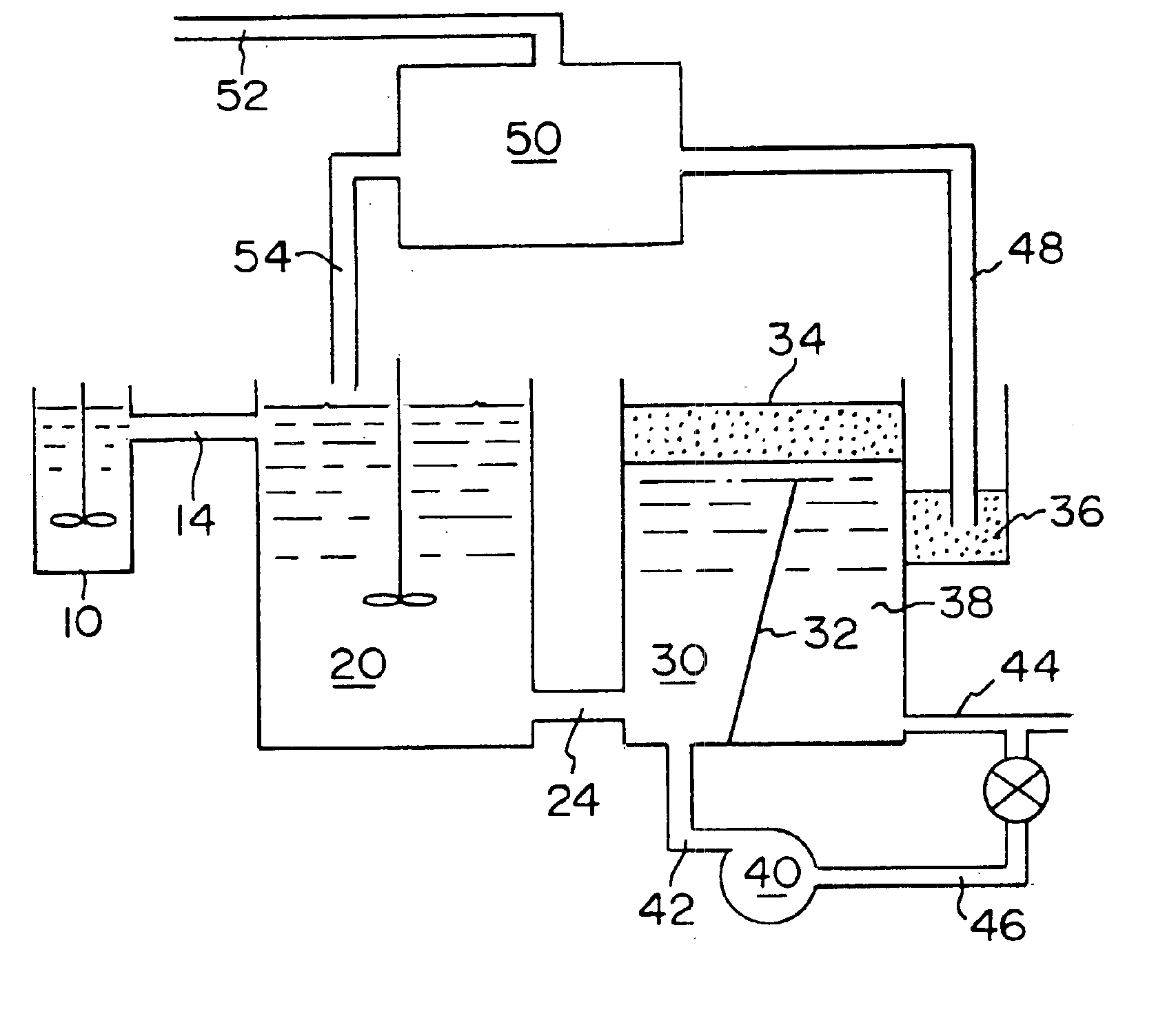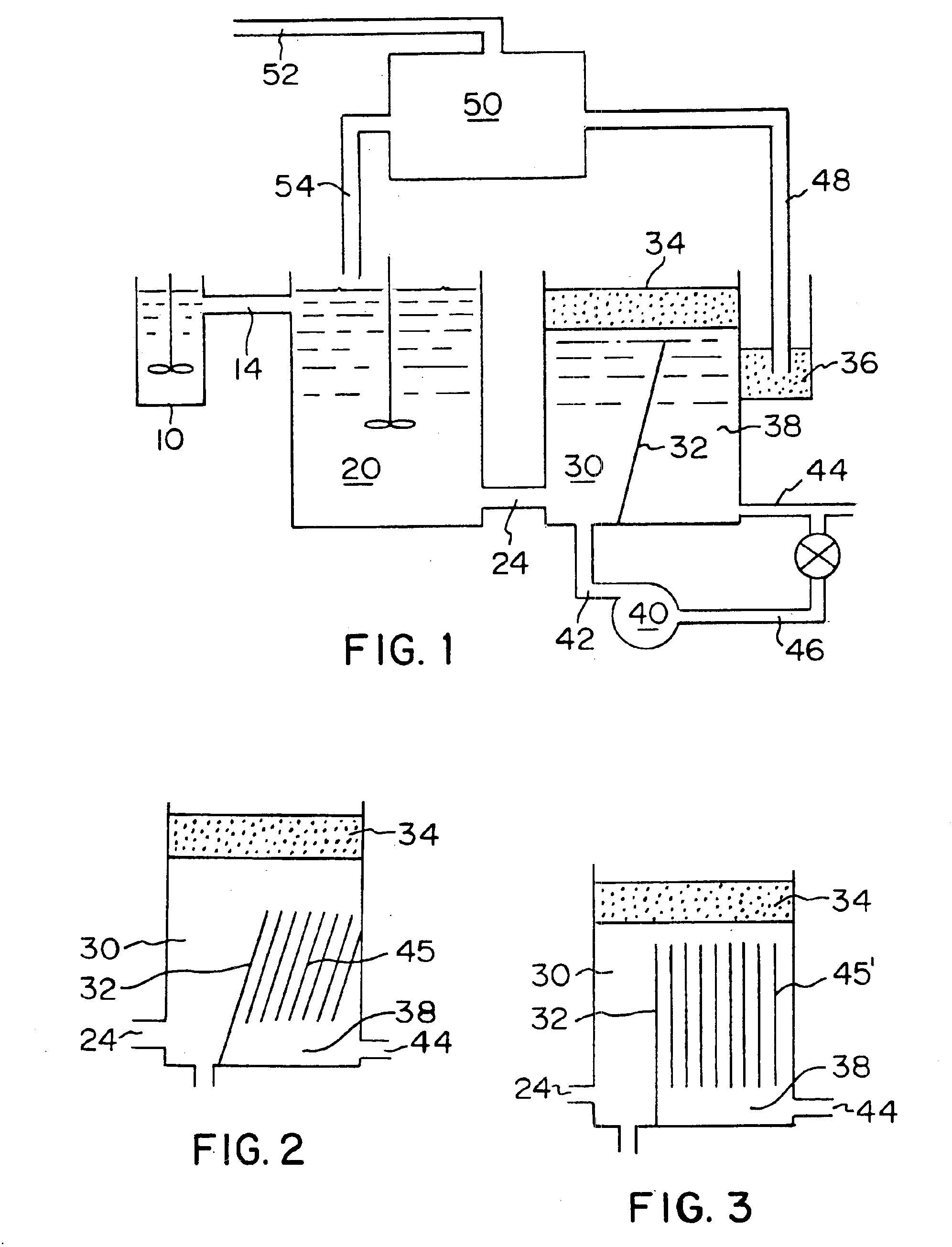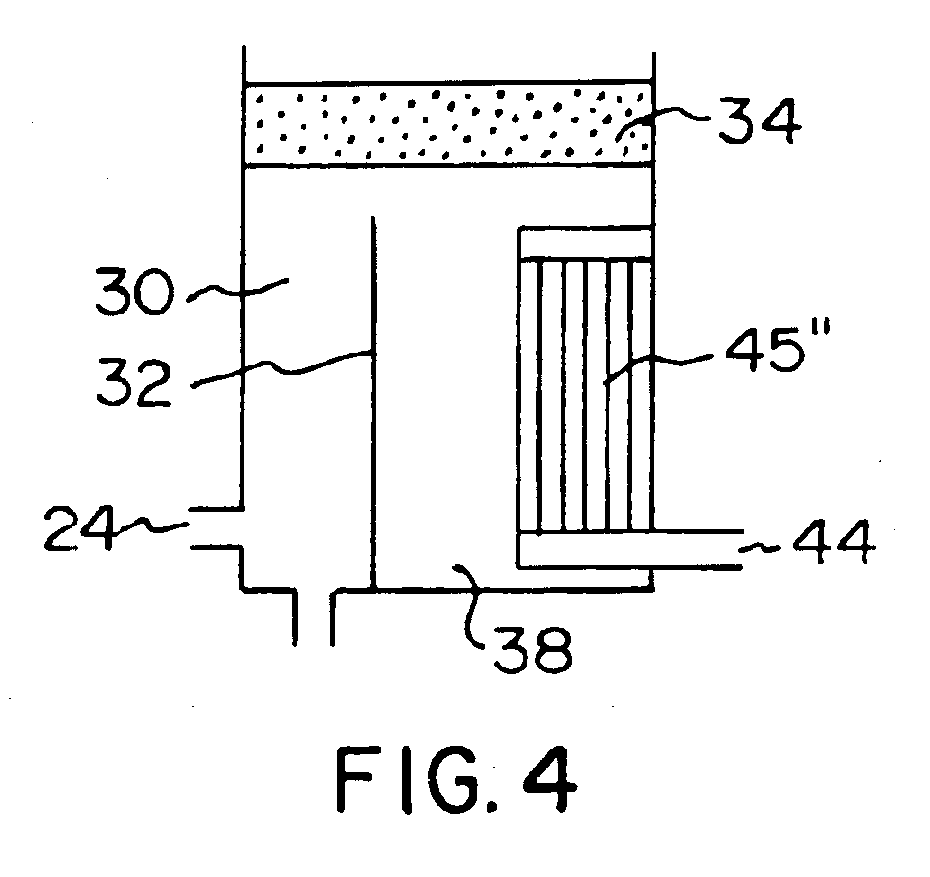Buoyant media flotation
a flotation media and flotation technology, which is applied in the direction of multi-stage water/sewage treatment, other chemical processes, separation processes, etc., can solve the problems of increasing the cost of the separation process, additional equipment and operating expenses are required to generate bubbles, and the time required for the unassisted settling process can be unacceptably long, so as to improve the separation of buoyant flocs and reduce the volume of sludge produced , the effect of less energy
- Summary
- Abstract
- Description
- Claims
- Application Information
AI Technical Summary
Benefits of technology
Problems solved by technology
Method used
Image
Examples
Embodiment Construction
[0017]The high rate clarification system of th-s invention makes use of high concentrations of particles of a buoyant media. The high concentrations improve the efficiency of flocculation and enable the system to produce a high rate of flotation.
[0018]Referring to FIG. 1, fluid to be treated flows, into a mixing chamber 10. A coagulant is added to the fluid in this chamber 10. The coagulants are typically metal salts, such as aluminum sulfate, ferric sulfate, or PAC1, or can be any of the coagulant-type polymers currently offered by chemical suppliers. The amount of coagulant needed depends on factors, such as the concentration of solids to be removed from the fluid, but is typically in the range of 5 and 180 milligrams per liter of fluid.
[0019]After coagulant is added, the resulting mixture passes through a flocculation chamber feed line 14 into a flocculation chamber 20. In the flocculation process, aggregate suspended particles grow in size as they combine. Buoyant media and a fl...
PUM
| Property | Measurement | Unit |
|---|---|---|
| Specific gravity | aaaaa | aaaaa |
Abstract
Description
Claims
Application Information
 Login to View More
Login to View More - R&D
- Intellectual Property
- Life Sciences
- Materials
- Tech Scout
- Unparalleled Data Quality
- Higher Quality Content
- 60% Fewer Hallucinations
Browse by: Latest US Patents, China's latest patents, Technical Efficacy Thesaurus, Application Domain, Technology Topic, Popular Technical Reports.
© 2025 PatSnap. All rights reserved.Legal|Privacy policy|Modern Slavery Act Transparency Statement|Sitemap|About US| Contact US: help@patsnap.com



